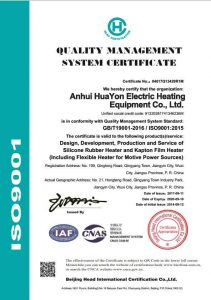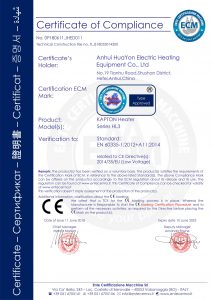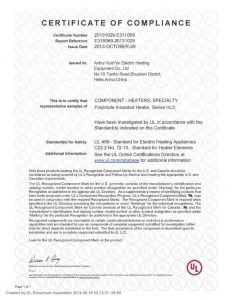Silicone Engine Heat Pad Quick Detail
Applicable Industries: medicine and healthcare, aerospace and aviation, Automotive industry, Consumer electronics
state: New
Type: electric heater
Birthplace:Anhui, China
brand name: HuaYon customize it
Dimension (L*W*H): personalized
Voltage: 3,7 ~ 480 V
1 one year warranty
Working temperature range: -30~200ºC
Material: Silicone rubber + engraved metal sheet
Thickness: 1,5-3 mm
Back adhesive: 3M 467/468 the personalized
Power density: 0,01-2,5 w/cm²
Power deviation: ±5%
Supply capacity: 50000 units per month
Packaging Details: inner PE bag + card
Certificates: THIS, RoHS, ISO9001
Silicone rubber heater is a type of thin film that heats up when electrified, in a standard thickness of 1.5 mm, Adopting nickel-chromium wires or nickel-chromium foils from 0.05 mm ~ 0.10 mm thick engraved in certain shapes, the heating component is wrapped with heat conductors and insulating materials on both sides, and completed in high temperature die forming and aging heat treatment.
Voltage | 3V-480V | Thickness | 1.5mm-3mm |
Power Density | 0.1-1.2W/CM2 | Insulation Ohm | More than 5MΩ |
Min Size | 10*10mm | Max Temperature | 250 degree |
Max Size | 2000*10000mm | Wire Tension | 15N*15N |
What is silicone rubber heater?
Freeze protection and condensation prevention for many types of instrumentation and equipment.
Medical equipment such as blood analyzers and test tube warmers.
Computer peripherals such as laser printers.
Curing of plastic laminates.
Photo Processing Equipment.
Semiconductor Processing Equipment.
Thermal transfer equipment
Drums and other containers and viscosity control and asphalt storage.
Key features and benefits of silicone rubber heaters include:
Flexibility: The flexibility of silicone rubber allows for molding, bend or mold these heaters to fit various shapes and surfaces. This feature makes them suitable for applications where rigid heaters are not practical..
Uniform heating: These heaters distribute heat evenly across their entire surface., mitigating the appearance of hot spots or cold regions and ensuring constant heating.
Quick response to heating: Silicone rubber heaters are known for their fast response times in reaching and adjusting temperatures., making them suitable for applications requiring rapid heating adjustments.
Durability: silicone rubber is resistant to various environmental factors, like humidity, chemicals and moderate physical wear, which improves the robustness of the heater.
Electrical isolation: The electrical insulating properties of silicone rubber ensure safe use in applications where electrical insulation is vital.
Customizable layout: Manufacturers can customize silicone rubber heaters in terms of size, form, power and temperature distribution to meet specific heating requirements.
Silicone rubber heaters are used in a wide spectrum of industries and applications, including:
Industrial processes: Heat tanks, pipelines, valves and manufacturing equipment, and assist in curing operations, drying and preheating.
Medical devices: They are used in medical equipment as IV bag warmers, heated patient warmers and medical imaging tables.
Aerospace and aviation: preventing ice buildup on aircraft components by deicing critical areas such as wings.
Food and beverage industry: maintenance of specific temperatures in food processing equipment, such as boilers and tanks, during production processes.
electronics: Integration in electronic cabinets, display panels and other devices for temperature regulation.
Automotive section: Used in seat heating applications, defrosting windows and preheating engines in vehicles.
A silicone thermal pad for motors, also known as silicone heating pad, is a device used to provide constant, controlled heat to motors or other mechanical parts. Below is a detailed explanation of its features and applications:
Characteristics
Material: Made of flexible and durable silicone rubber, often reinforced with fiberglass.
heating element: Contains an electric heating element, usually nichrome wire or etched sheet, embedded inside the silicone.
Temperature control: Often comes with built-in thermostats or temperature sensors for precise control.
Adhesive backing: Some models have adhesive backing for easy attachment to surfaces.
Personalization: Available in various shapes, sizes and powers to suit specific applications.
Applications
Engine heating: It is used in automotive industries, marine and aviation to keep engines warm in cold weather, ensuring easier starts and reduced wear.
Industrial uses: Applied to pipes, tanks and other equipment to maintain or raise temperatures in various industrial processes.
Medical and laboratory equipment: provides controlled heating for incubators, sterilizers and other sensitive equipment.
electronics: Prevents condensation and maintains optimal operating temperatures for sensitive electronic components.
Benefits
Flexibility: Can adapt to complex shapes and surfaces.
Efficiency: Provides direct and efficient heating, reducing energy waste.
Durability: Chemical resistant, humidity and mechanical wear.
Security: They are often designed with overheat protection and even heat distribution to prevent hot spots.
Example use case
In cold climates, A silicone engine heat pad can be placed on the engine block or oil pan. When connected to a power source, warms engine components to a suitable temperature, ensuring the vehicle starts smoothly even in freezing conditions. This not only improves engine performance but also extends engine life by reducing cold start stress..
![]()
![]()





Reviews
There are no reviews yet.